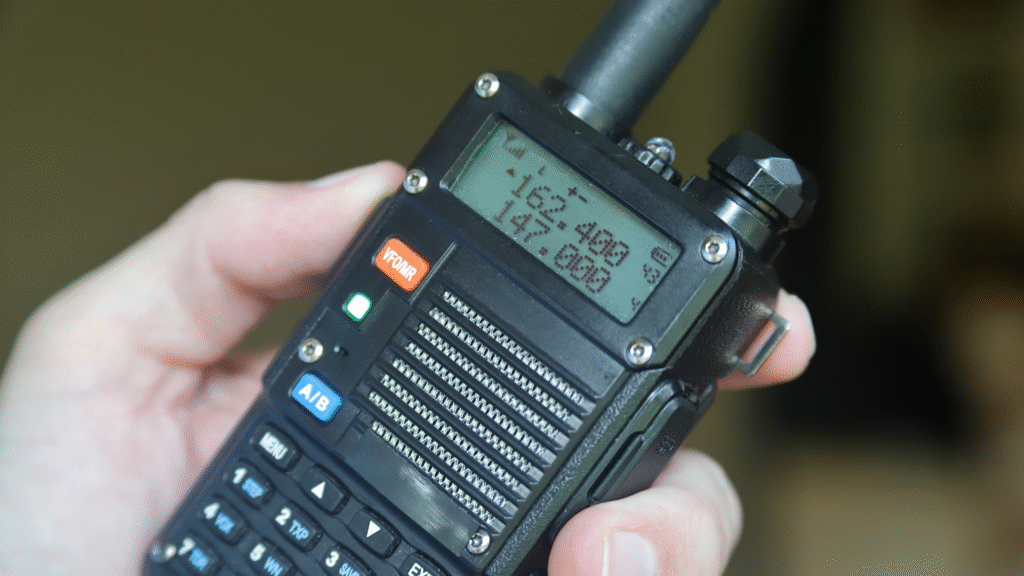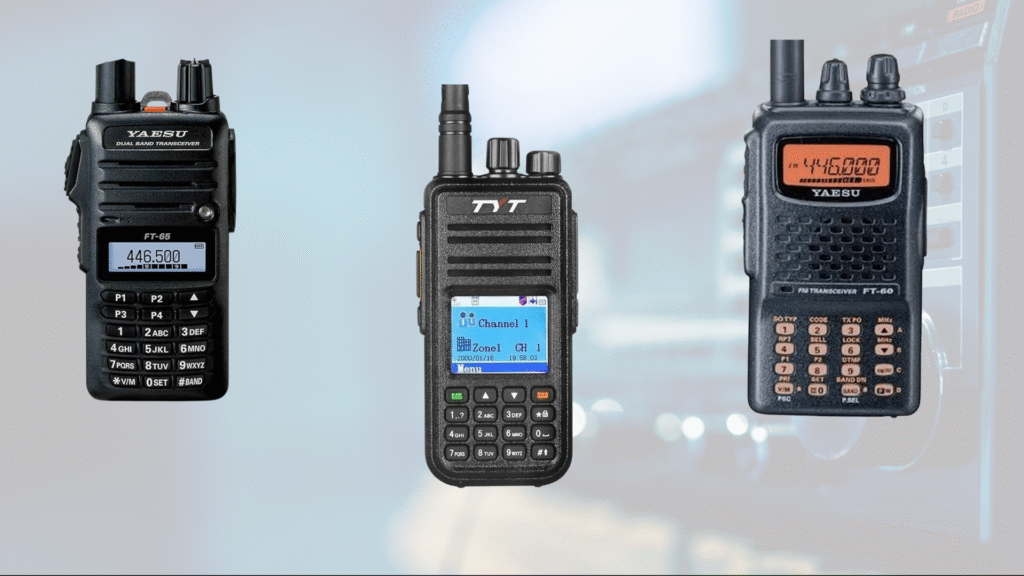Handheld Ham Radios Stay Connected in Any Situation
In today’s fast-paced world, staying connected is crucial, especially during emergencies or outdoor adventures. Handheld ham radios have emerged as a reliable means of communication, operating independently of traditional infrastructure.

These compact devices are designed to be rugged and portable, making them ideal for various situations. Whether you’re an outdoor enthusiast or an emergency responder, handheld ham radios provide a vital link to stay connected.
Key Takeaways
- Handheld ham radios are compact and rugged devices.
- They operate independently of traditional communication infrastructure.
- Ideal for outdoor adventures and emergency response scenarios.
- Provide a reliable means of communication.
- Portable and easy to use.
The Critical Role of Amateur Radio in Modern Communication
In an era dominated by smartphones, amateur radio remains a vital tool for communication. Its significance extends beyond everyday use, proving indispensable in emergencies and remote areas where modern infrastructure may be lacking.
Why Ham Radio Thrives in the Smartphone Era
Ham radio thrives in the smartphone era due to its reliability and independence from commercial networks. Unlike cell phones, handheld ham radios do not rely on cell towers, making them operational even when other forms of communication fail. This reliability is crucial during natural disasters and emergencies, where conventional communication methods may be disrupted. For ham radio beginners, this aspect highlights the technology’s potential for staying connected when it matters most.
Real-World Emergency Success Stories
There are numerous instances where ham radio has played a pivotal role in emergency response. For example, during Hurricane Katrina, ham radio operators provided critical communication links when traditional networks were down. Such success stories underscore the value of portable ham radios in disaster scenarios. Reviews of handheld ham radios often highlight their durability and effectiveness in these situations, making them a worthwhile investment for those interested in emergency preparedness.
What Are Handheld Ham Radios and How Do They Work
Handheld ham radios are portable devices that enable communication over various distances, playing a crucial role in both everyday life and emergencies. These devices are a vital tool for amateur radio operators, providing a means of communication that is independent of traditional infrastructure.
Basic Principles of Radio Communication
Radio communication involves the transmission and reception of signals through radio waves. Ham radios operate on specific frequencies, allowing users to communicate with others locally and globally. The basic principle relies on converting voice or data into radio signals that can be transmitted and received by other radios.

Anatomy of a Handheld Transceiver
A handheld ham radio, or transceiver, consists of several key components. These include the transmitter, receiver, antenna, and control circuitry. The transmitter converts voice into radio signals, while the receiver captures and decodes incoming signals. The antenna plays a critical role in the efficiency of signal transmission and reception.
Frequencies, Bands, and Range Capabilities
Handheld ham radios operate on various frequency bands, each with its own characteristics and range capabilities. The range of a ham radio depends on factors such as the frequency used, the power output, and the terrain. Understanding these factors is crucial for effective communication. Here are some key aspects to consider:
- Frequency Bands: Ham radios operate on several bands, including VHF and UHF, each suitable for different types of communication.
- Range Capabilities: The range can vary significantly based on the band and conditions. For example, VHF is often used for local communications, while HF can reach globally.
- Power Output: The power output of the device affects its range, with higher power generally resulting in longer range.
Getting Your Ham Radio License: A Step-by-Step Guide
Obtaining a ham radio license is a crucial step for legally operating a handheld ham radio. The process involves studying for the license exam, passing the test, and obtaining the license. To start, you’ll need to familiarize yourself with the basic principles of radio communication and the rules governing ham radio operation.
When choosing the best handheld ham radio for your needs, consider a dual-band ham radio for its versatility and range. Dual-band radios can operate on two different frequency bands, making them ideal for various communication needs. Study materials are available from the Federal Communications Commission (FCC) and organizations like the American Radio Relay League (ARRL).
Once you’ve passed the exam, you’ll be issued a license, allowing you to operate your handheld ham radio legally. With your license in hand, you can explore the many features of your radio, including its range capabilities and frequency options. By following these steps, you’ll be well on your way to enjoying the benefits of ham radio operation.
FAQ
What is a handheld ham radio?
A handheld ham radio, also known as a portable ham radio or handheld amateur radio, is a compact, battery-powered two-way radio that allows users to communicate with others locally and worldwide using specific radio frequencies.
Do I need a license to operate a handheld ham radio?
Yes, to operate a handheld ham radio, you need to obtain a ham radio license from the Federal Communications Commission (FCC). This involves passing a written exam that tests your knowledge of radio theory, operating practices, and FCC regulations.
What is the difference between a single-band and a dual-band handheld ham radio?
A single-band handheld ham radio operates on one specific frequency band, whereas a dual-band handheld ham radio can operate on two different frequency bands, typically VHF (Very High Frequency) and UHF (Ultra High Frequency). Dual-band radios offer more flexibility and are generally more popular among ham radio enthusiasts.
How far can I communicate with a handheld ham radio?
The communication range of a handheld ham radio depends on several factors, including the radio’s power output, antenna quality, terrain, and weather conditions. Typically, handheld ham radios can communicate over a range of a few miles to several dozen miles, with some models capable of reaching even farther distances when used with repeaters or in ideal conditions.
What are some popular brands of handheld ham radios?
Some well-known brands of handheld ham radios include Baofeng, Yaesu, Icom, and Kenwood. These brands offer a range of models with varying features, power outputs, and price points, catering to different needs and preferences among ham radio enthusiasts.
Can I use a handheld ham radio in emergencies?
Yes, handheld ham radios are often used in emergencies, such as natural disasters, search and rescue operations, and other critical events, due to their portability, reliability, and ability to function independently of traditional communication infrastructure.
How do I choose the best handheld ham radio for my needs?
When selecting a handheld ham radio, consider factors such as the radio’s power output, frequency range, battery life, durability, and additional features like GPS or digital modes. Research different models, read reviews, and consult with experienced ham radio operators to find the best handheld ham radio for your specific needs and preferences.
